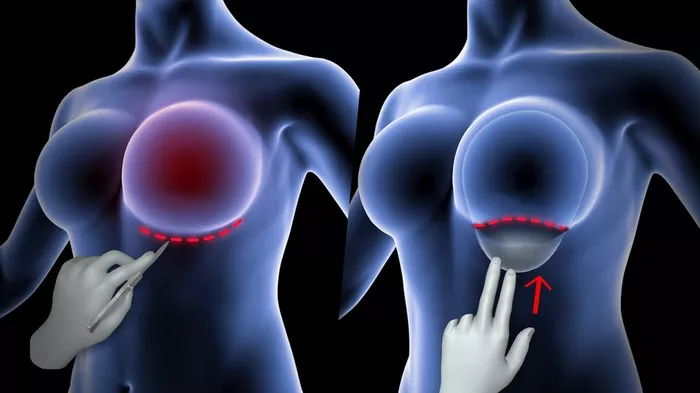Breast augmentation, commonly known as “boob job,” is a cosmetic procedure that involves the insertion of implants to enhance the size and shape of the breasts. While breast augmentation can provide a significant boost in self-confidence, many women wonder if the procedure is painful and how long the recovery process takes. In this article, we will explore the pain and recovery process of boob jobs and provide insights into the factors that can affect the healing process.
What are Boob Jobs?
Boob jobs, or breast augmentation, are a cosmetic procedure that involves the insertion of implants to enhance the size and shape of the breasts. The procedure can be performed using saline or silicone implants and can be placed either above or below the chest muscle. Boob jobs can be used to correct asymmetry, increase breast size, or restore volume lost due to aging, pregnancy, or weight loss.
Pain and Discomfort After Boob Jobs:
Like any surgical procedure, boob jobs can cause pain and discomfort during the recovery process. Immediately after the procedure, patients may experience soreness, swelling, and bruising in the breast area. Pain medication can be prescribed to manage the discomfort, and patients are advised to rest and avoid strenuous activity for several weeks.
The level of pain and discomfort experienced after boob jobs can vary depending on several factors, including the extent of the procedure, the placement of the implants, and the individual’s pain tolerance. Some women may experience minimal discomfort, while others may require more pain medication and a longer recovery period.
Recovery Process After Boob Jobs:
The recovery process after boob jobs can take several weeks to several months, depending on the extent of the procedure and the individual’s healing process. During the first few days after the procedure, patients are advised to rest and avoid strenuous activity. They may also need to wear a surgical bra or compression garment to support the breasts and promote healing.
In the weeks following the procedure, patients may experience swelling, bruising, and discomfort in the breast area. It is essential to follow all post-operative instructions provided by the surgeon, including taking medication as prescribed, avoiding certain activities, and attending follow-up appointments.
Factors That Can Affect the Healing Process:
Several factors can affect the healing process after boob jobs, including:
The extent of the procedure: The more extensive the procedure, the longer the recovery period may be.
The placement of the implants: Implants placed under the chest muscle may require a longer recovery period than those placed above the muscle.
Age and overall health: Younger, healthier patients may heal more quickly than older or less healthy patients.
Pain tolerance: Patients with a higher pain tolerance may experience less discomfort during the recovery process.
Conclusion:
Boob jobs can cause pain and discomfort during the recovery process, but the level of pain experienced can vary depending on several factors. It is essential to follow all post-operative instructions provided by the surgeon and to be patient during the healing process. While the recovery process can take several weeks to several months, most patients are pleased with the results of their boob jobs and enjoy a significant boost in self-confidence. By understanding the pain and recovery process of boob jobs, women can make informed decisions about their healthcare and achieve the results they desire.
FAQs
1. Which day is most painful after breast augmentation?
The level of discomfort experienced after breast augmentation can vary from person to person, but many patients report that the first few days after surgery tend to be the most uncomfortable. During this time, you may experience swelling, bruising, and tightness in the chest area. Your surgeon will prescribe pain medication to help manage any discomfort, and following post-operative care instructions diligently can also aid in minimizing pain and promoting healing.
2. What hurts more, breast implants or tummy tuck?
The level of pain experienced after breast augmentation or tummy tuck surgery can vary depending on individual pain tolerance, the extent of the procedure, and the surgical technique used. While both surgeries involve some degree of discomfort during the recovery period, patients often report that breast augmentation tends to cause more acute pain initially, particularly due to the tightness and pressure in the chest area. However, pain levels can differ for each person, and it’s essential to discuss pain management strategies with your surgeon before undergoing any procedure.
3. Do you lose feeling in breasts after implants?
Changes in sensation, including temporary numbness or altered sensitivity, are common after breast augmentation surgery. Some patients may experience decreased nipple sensation or changes in breast sensitivity, while others may notice increased sensitivity. In most cases, sensation gradually returns over time as the nerves heal, but it’s essential to discuss any concerns about sensation changes with your surgeon during the consultation and follow-up appointments.
4. How long does it take for breast implants to feel normal?
The timeline for breast implants to feel “normal” varies from person to person and depends on factors such as individual healing ability, implant placement, and surgical technique. Generally, patients can expect to feel some degree of tightness, swelling, and discomfort in the weeks following surgery. Sensations such as tightness and firmness typically subside as the tissues relax and the implants settle into their final position. Most patients begin to feel more comfortable and accustomed to their breast implants within a few weeks to a few months after surgery, although full recovery and adjustment may take several months.


